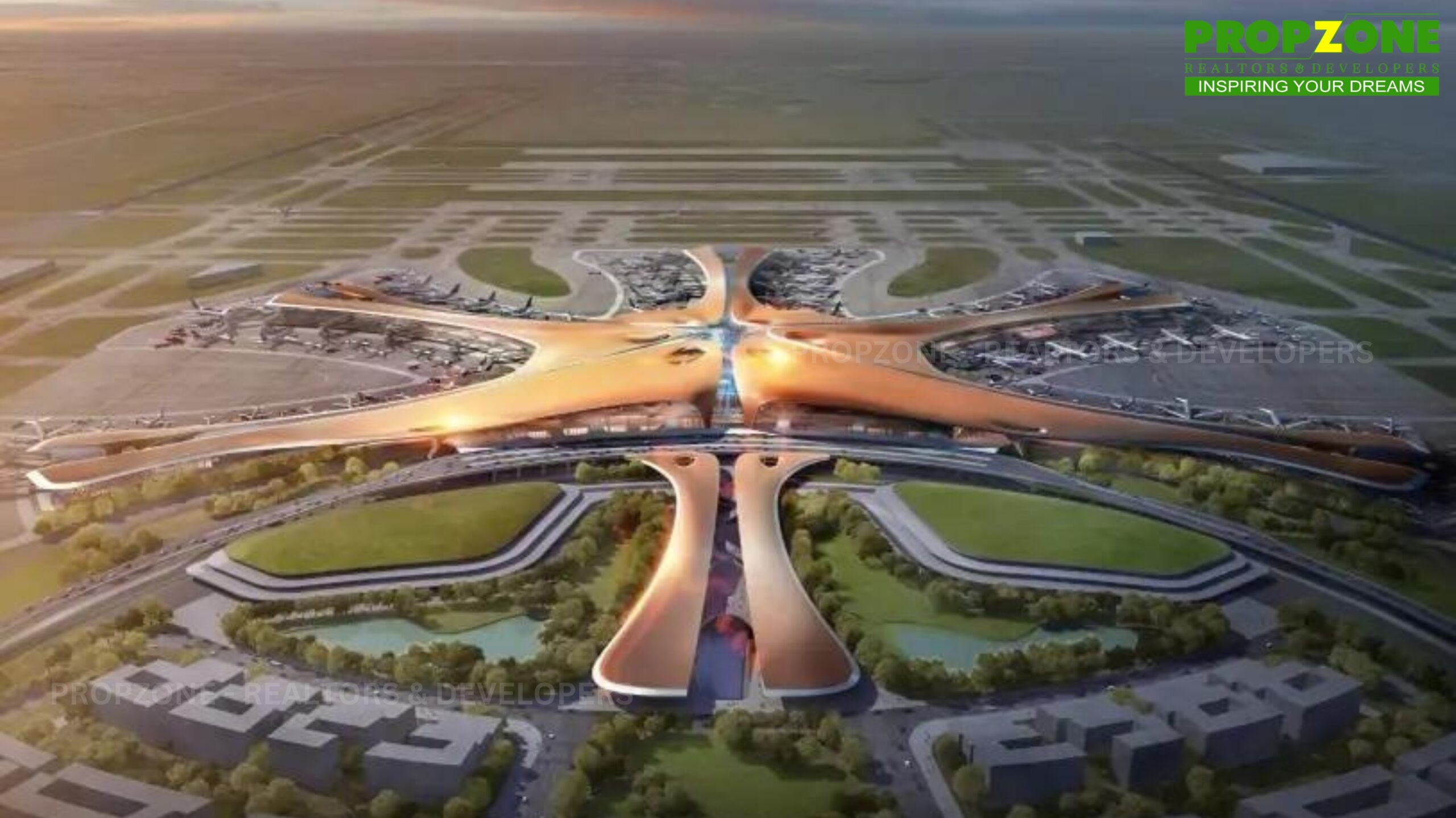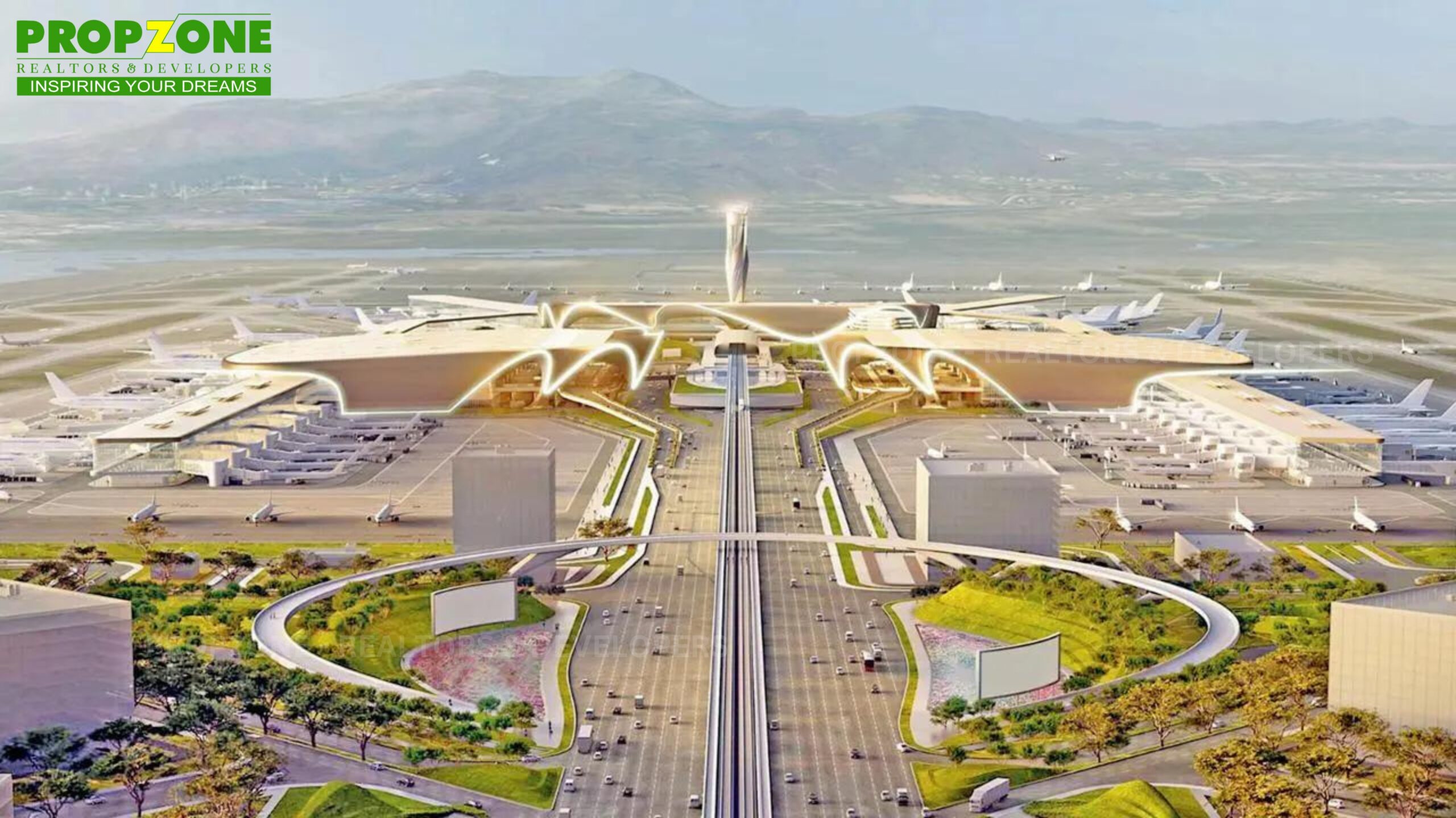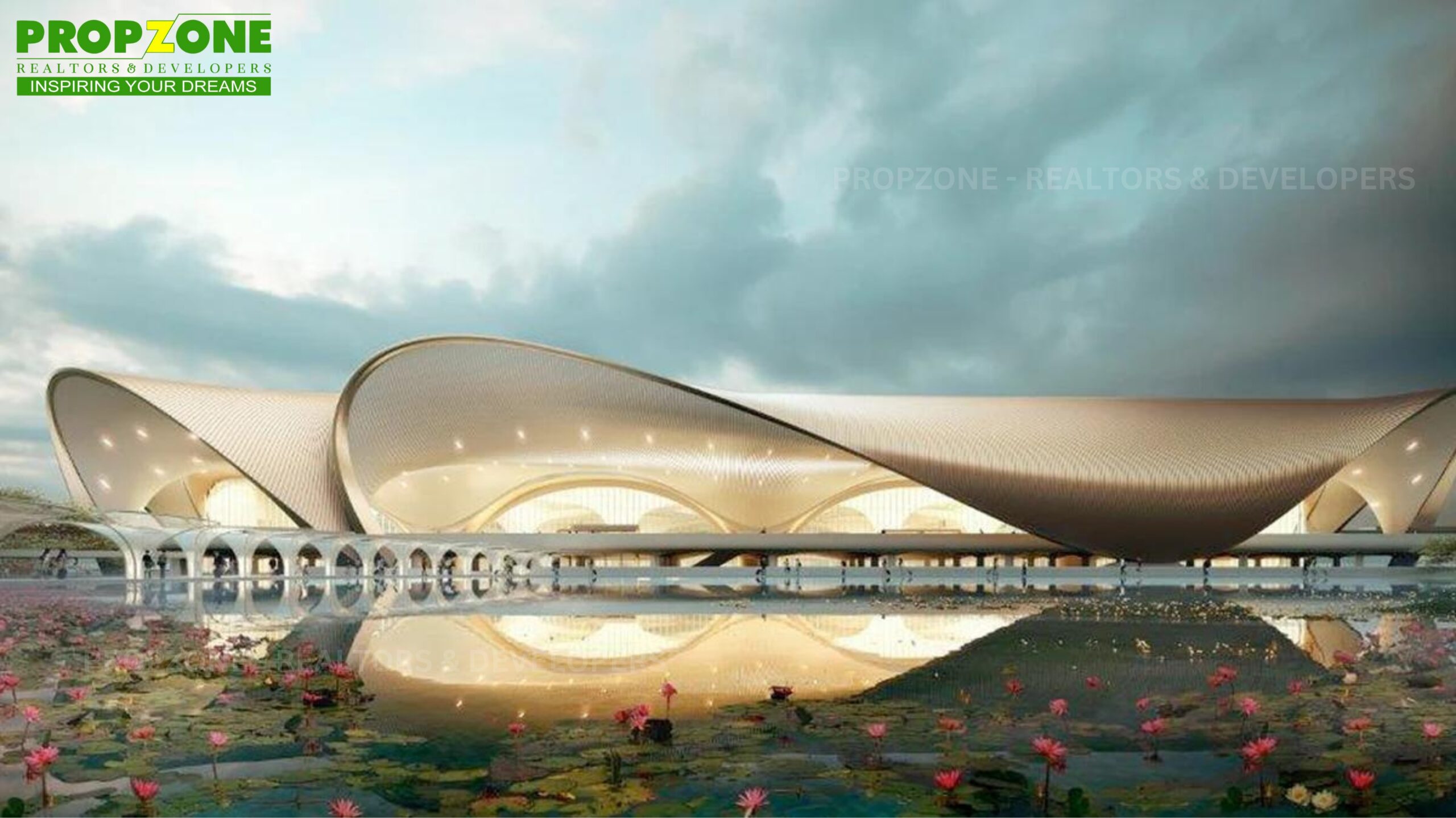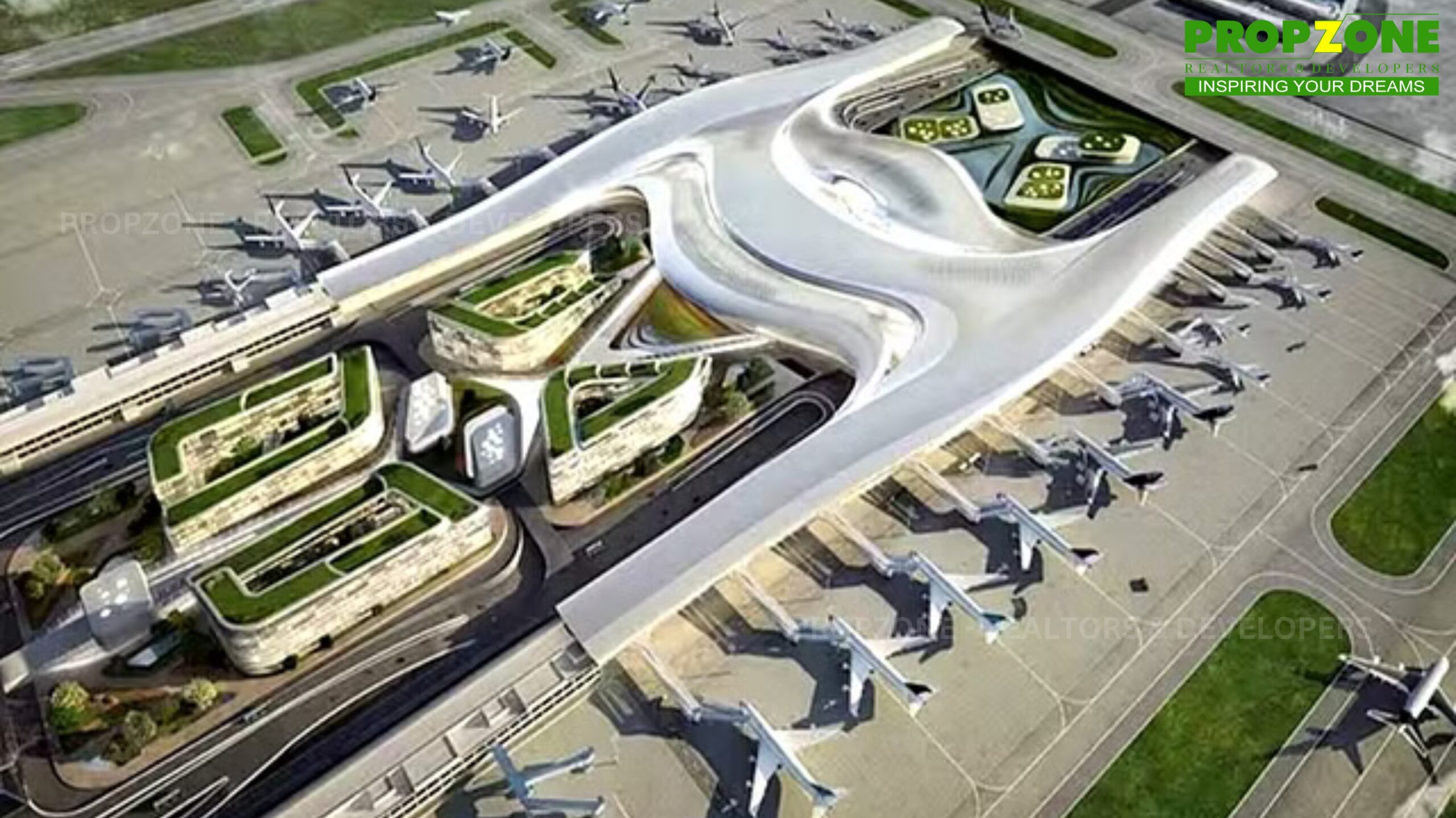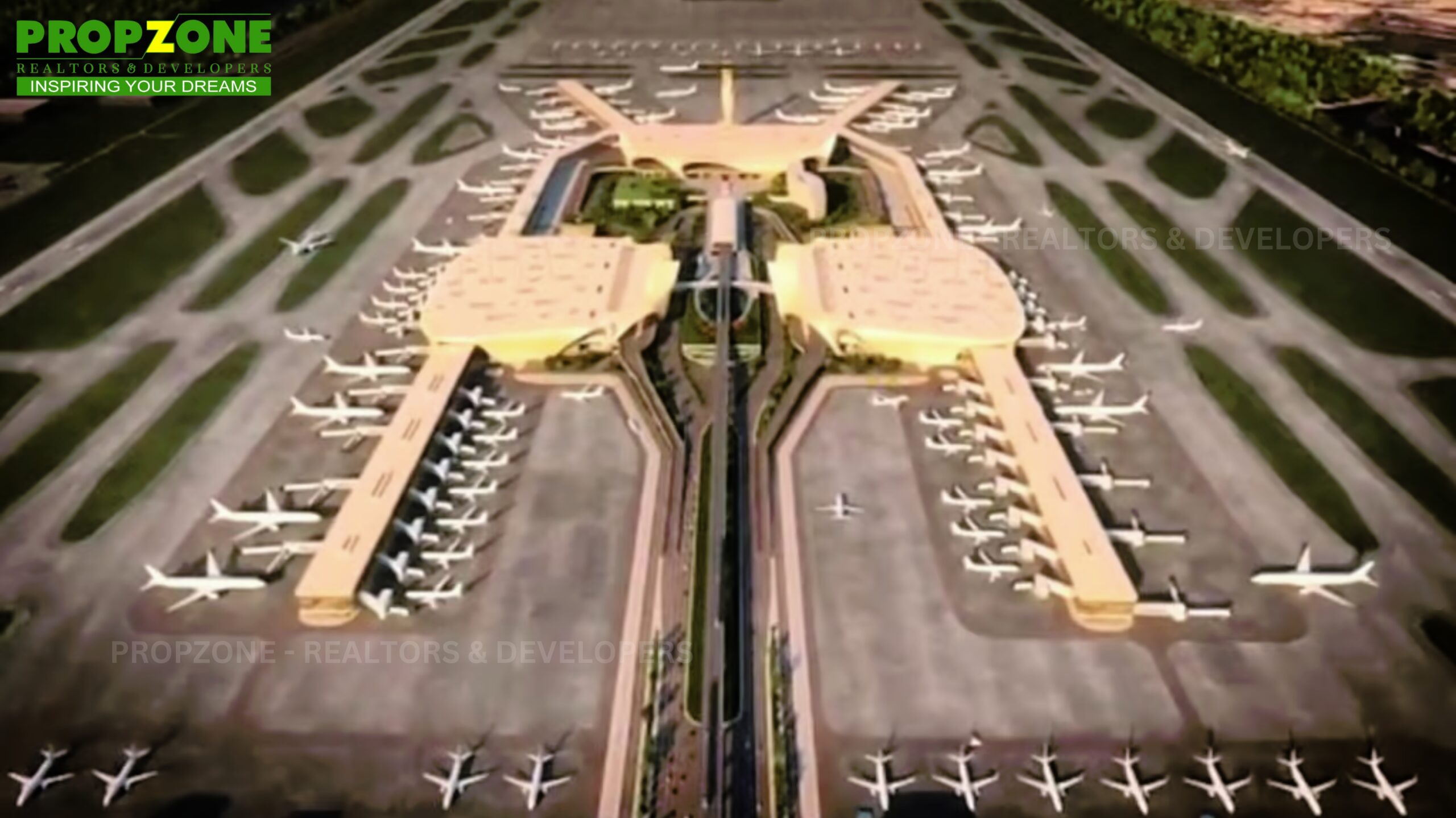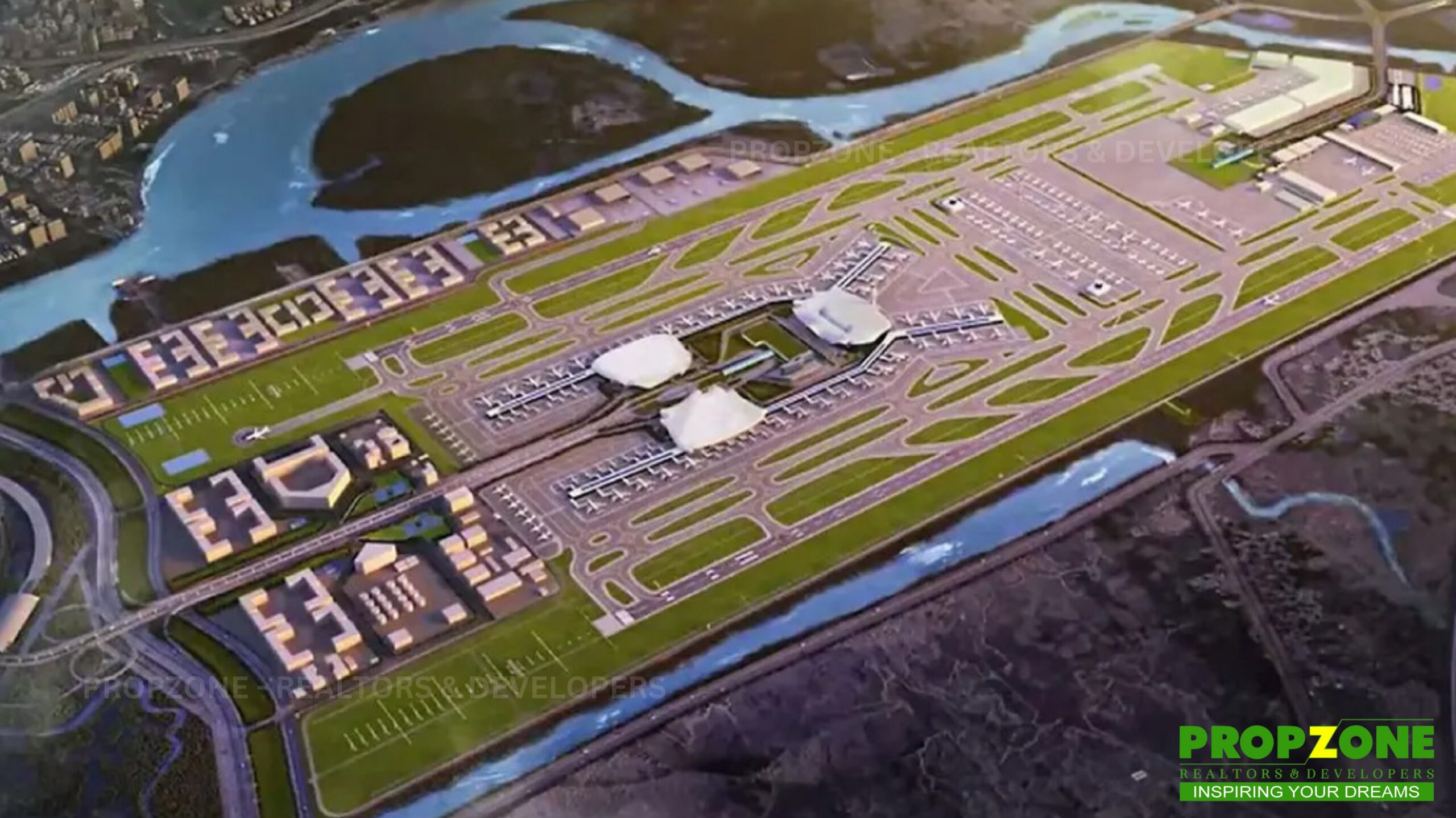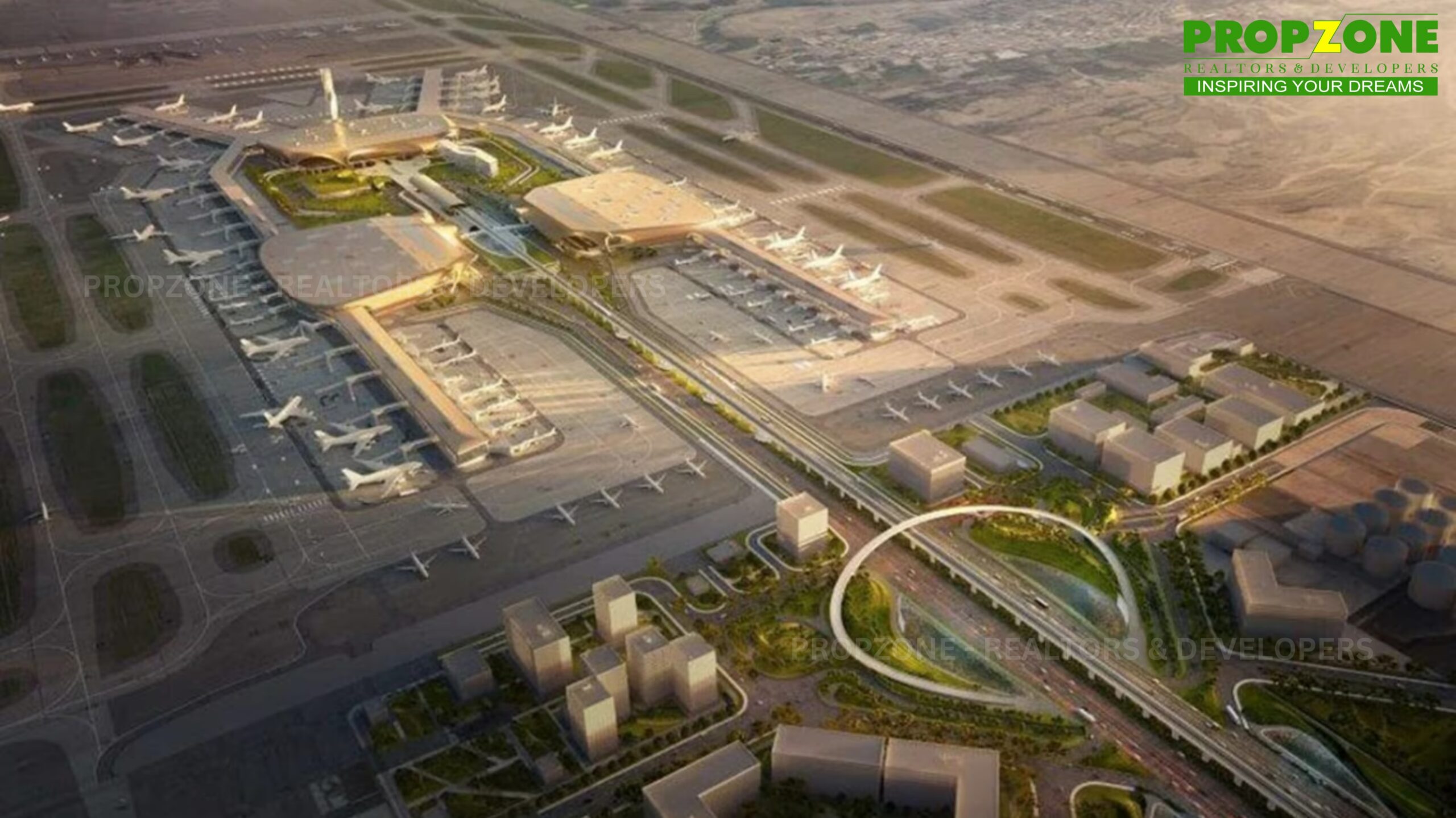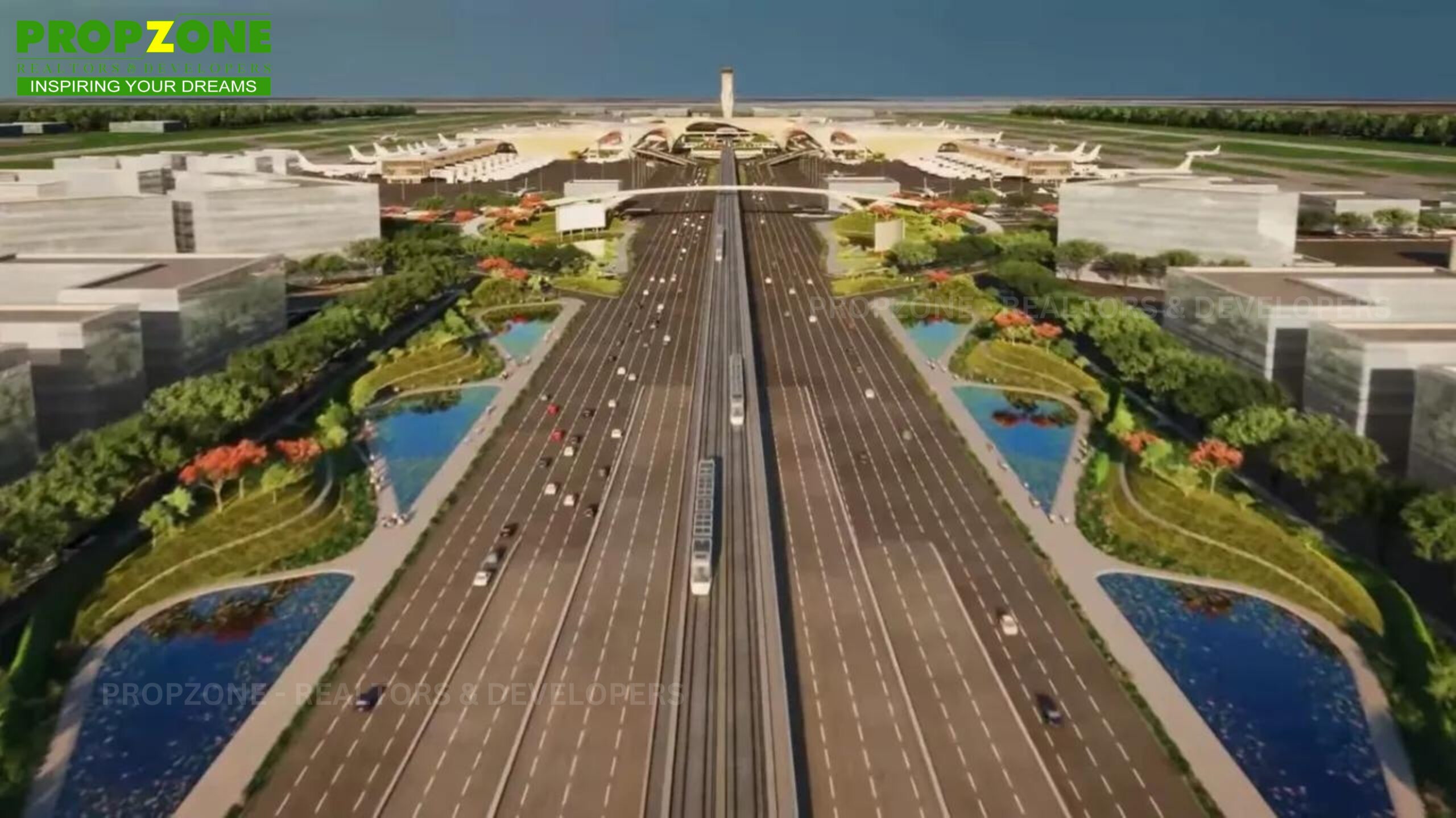
The Navi Mumbai International Airport, officially named D. B. Patil International Airport, is a significant infrastructure project underway in Maharashtra, India. Here’s a detailed exploration of its development, facilities, and the historical background leading to its construction.
Development Overview
Origins and Naming
The airport, named after Dinkar Patil, a prominent leader, is situated in Ulwe, Navi Mumbai. The project is overseen by the City and Industrial Development Corporation (CIDCO) and is being constructed in phases. The first phase aims to accommodate 25 million passengers annually, with a final capacity projection of over 90 million passengers by 2032.
Stakeholders and Funding
Navi Mumbai International Airport Limited (NMIAL), a joint venture between Adani Airports Holdings Limited and CIDCO, is overseeing the project, with Adani holding 74% equity. The project, estimated at ₹16,700 crore, operates on a Public-Private Partnership (PPP) model, with CIDCO managing the execution.
Construction Timeline
Construction commenced in August 2021, following Prime Minister Narendra Modi’s foundation stone-laying ceremony in February 2018. This collaboration injected fresh impetus, leading to significant progress, with 57% of physical work completed by November 2023. The airport is expected to be operational by March 2025.
Historical Background
Inception and Approval
The project was first proposed in 1997, with initial site recommendations made in 2000. After several feasibility studies and approvals, including environmental clearances, the project received in-principle approval from the Union Cabinet in July 2007.
Development Challenges
Over the years, the project faced numerous hurdles, including environmental concerns, land acquisition issues, and resettlement challenges. CIDCO worked to address these challenges, including diverting the Ulwe River and resolving rehabilitation issues.
Construction Progress
Despite delays and protests, construction progressed steadily, with Larsen and Toubro (L&T) awarded the construction contract in 2019. Adani Group’s involvement in 2021 injected new momentum, leading to significant progress, with 57% of physical work completed by November 2023.
Facilities
Structural Overview
The airport spans 1,160 hectares and features extensive infrastructure, including two runways, three interconnected terminals designed by Zaha Hadid Architects, cargo terminals, fuel farms, and aircraft hangars.
Passenger and Cargo Capacity
Upon completion, the airport aims to handle 90 million passengers annually and accommodate significant cargo traffic, contributing to regional connectivity and economic growth.
Environmental Considerations
The project includes measures to mitigate environmental impact, such as mangrove preservation and hydrological studies to address water flow concerns.
Future Prospects
Connectivity and Economic Impact
The airport’s strategic location near major highways and proposed metro lines enhances regional connectivity and presents significant economic opportunities for the surrounding areas.
Investment Potential
Investing in developments near airport land can yield substantial returns due to increased commercial activity, tourism, and infrastructure growth. Proximity to the airport enhances accessibility and attractiveness for businesses and investors.
In conclusion, the Navi Mumbai International Airport represents a significant milestone in India’s aviation infrastructure development. Despite initial challenges, the project has made remarkable progress and is poised to contribute to regional growth and connectivity upon completion. Investing in developments near the airport holds promise for economic prosperity and development in the region.

